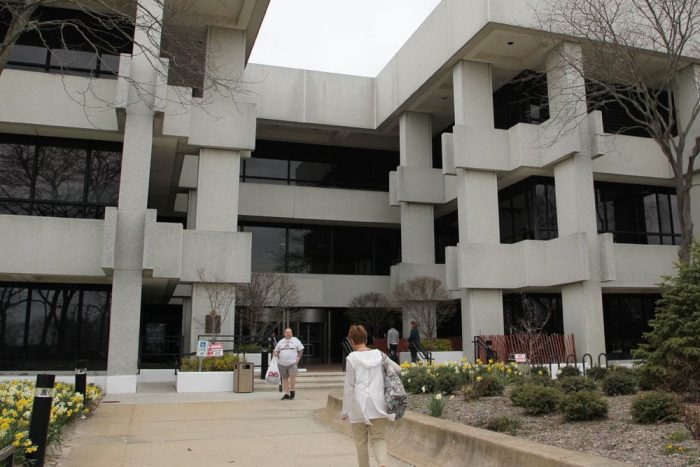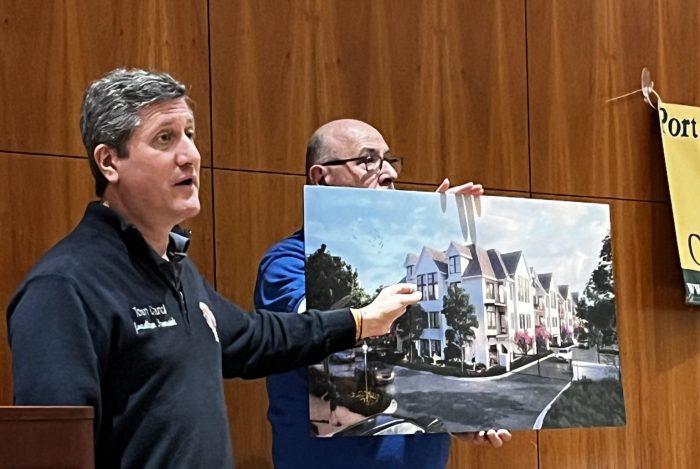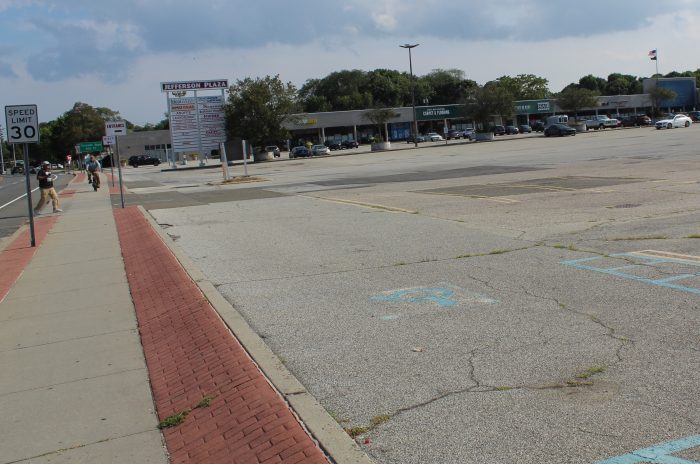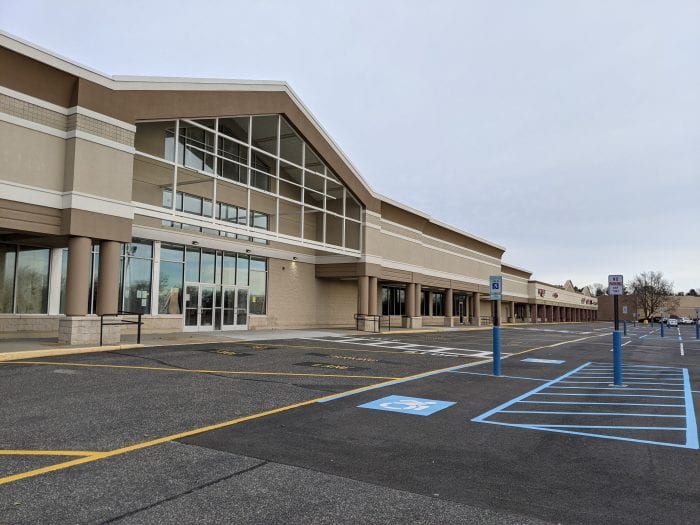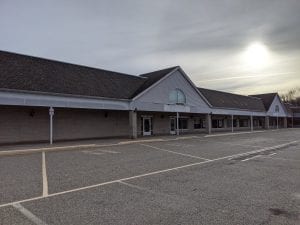By Carolyn Sackstein
The Brookhaven Town Board meeting last Thursday, Nov. 30, began at 5 p.m. and didn’t close until after 11. Many residents who attended stayed for the long haul.
The board heard public comments on the application of Hauppauge-based Staller Associates, owner of the Jefferson Plaza shopping center at the intersection of Route 112 and Terryville Road. Staller is seeking a change of zone for the 10-acre parcel from a J-2 Business District to a CRD Commercial Redevelopment District.
The CRD is a new zoning category within the town Code. Jefferson Plaza will be the first property to receive this classification if the board greenlights the application.
A town official indicated that under the conditions of the CRD code, the development would qualify for 280 residential units. The proposal includes demolishing the existing shopping center to accommodate mixed-use development.
Anthony Guardino, partner at the Hauppauge-based Farrell Fritz law firm, represents the applicant. In a presentation, he traced the property’s historical developments, contributing to “an unsustainably high vacancy rate” with today’s blighted conditions.
The CRD code “creates the planning tool which the Stallers are using to redevelop their blighted shopping center into a destination development with a dynamic mix of residential and commercial uses,” he said. “And after many years of planning and design and input from the town and the community and numerous plan revisions, the Stallers believe it is time to put pencils down. It is time to move this project forward.”
He added that the current plan accommodates 280 apartments — 224 of which will be “market rate,” with the remaining 56 units set aside as affordable housing for people with intellectual or developmental disabilities. The attorney projected that approximately 50,000 square feet of commercial space would be occupied by a restaurant, food hall, retail, office space and health club.
Public comments primarily revolved around building height, density, traffic and emergency services. Ira Costell, president of the Port Jefferson Station/Terryville Civic Association, stressed the importance of proper planning in weighing these factors.
“There is appetite and willingness to see investment in this parcel,” he said. “While this presents an opportunity, it is incumbent on us to address and mitigate the negative impacts that could follow from the intensive use on that parcel.”
Suffolk County Legislator-elect Steve Englebright (D-Setauket), whose 5th Legislative District includes Port Jeff Station, discussed the possible environmental impact of redevelopment.
Skyler Johnson (D-Port Jefferson Station) — currently pursuing the Democratic nomination for New York’s 4th Assembly District— placed the proposed redevelopment in the context of ongoing affordability concerns.
“If we continue on this path, we will see not only young people not be able to afford to live here, but older people not be able to retire and downsize as their kids continue to need to stay in their homes,” he said.
Some spoke in favor of the redevelopment project. “I am in favor of the zone change,” Port Jeff village resident Brian Harty said.
Bob LoNigro, whose family-owned business, Plaza Sports, was formerly in the shopping center for decades, said, “I think it is important for the community to understand who they’re dealing with. We dealt with [the Staller family], who were honorable, honest and caring about my family. They cared about our success,” adding, “I was sitting there thinking this was going to be a war, and it’s not a war. We’ve just got to tweak it and make some concessions and get to the finish line. I would love nothing more than to see that place flourish again.”
The board made no decisions on the application. Residents can continue submitting written comments up to 30 days after the meeting.
To watch the full public hearing, please visit brookhavenny.gov/meetings.

